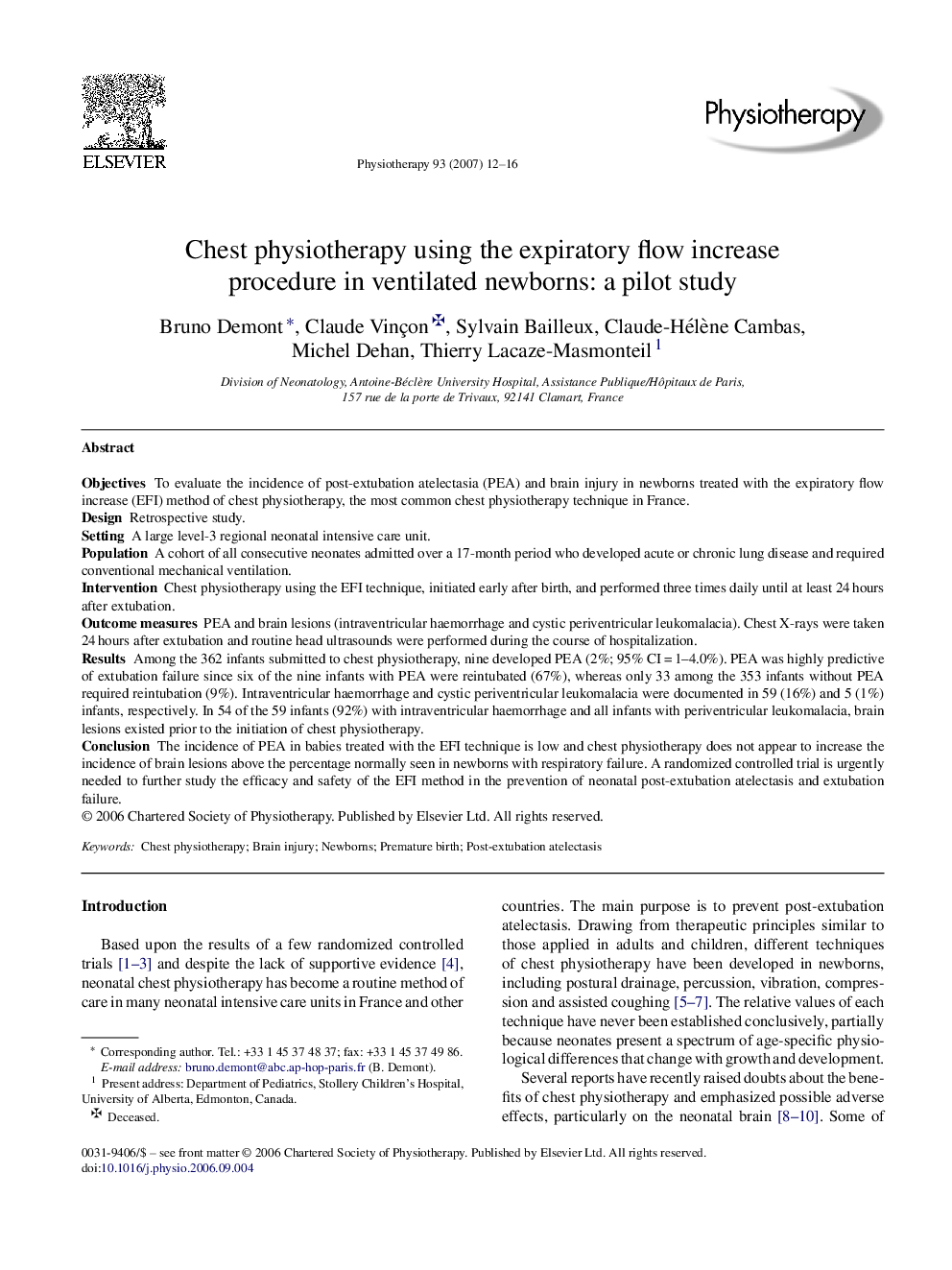| Article ID | Journal | Published Year | Pages | File Type |
|---|---|---|---|---|
| 2627517 | Physiotherapy | 2007 | 5 Pages |
ObjectivesTo evaluate the incidence of post-extubation atelectasia (PEA) and brain injury in newborns treated with the expiratory flow increase (EFI) method of chest physiotherapy, the most common chest physiotherapy technique in France.DesignRetrospective study.SettingA large level-3 regional neonatal intensive care unit.PopulationA cohort of all consecutive neonates admitted over a 17-month period who developed acute or chronic lung disease and required conventional mechanical ventilation.InterventionChest physiotherapy using the EFI technique, initiated early after birth, and performed three times daily until at least 24 hours after extubation.Outcome measuresPEA and brain lesions (intraventricular haemorrhage and cystic periventricular leukomalacia). Chest X-rays were taken 24 hours after extubation and routine head ultrasounds were performed during the course of hospitalization.ResultsAmong the 362 infants submitted to chest physiotherapy, nine developed PEA (2%; 95% CI = 1–4.0%). PEA was highly predictive of extubation failure since six of the nine infants with PEA were reintubated (67%), whereas only 33 among the 353 infants without PEA required reintubation (9%). Intraventricular haemorrhage and cystic periventricular leukomalacia were documented in 59 (16%) and 5 (1%) infants, respectively. In 54 of the 59 infants (92%) with intraventricular haemorrhage and all infants with periventricular leukomalacia, brain lesions existed prior to the initiation of chest physiotherapy.ConclusionThe incidence of PEA in babies treated with the EFI technique is low and chest physiotherapy does not appear to increase the incidence of brain lesions above the percentage normally seen in newborns with respiratory failure. A randomized controlled trial is urgently needed to further study the efficacy and safety of the EFI method in the prevention of neonatal post-extubation atelectasis and extubation failure.
